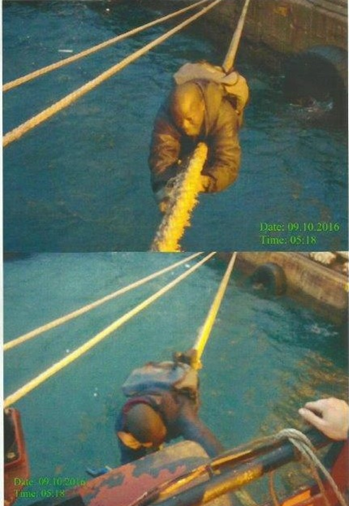Due to its strict regulations, there may be even more severe consequences for the ship in cases involving stowaways embarking in South Africa. This article provides guidance on additional precautions to be taken when in South African waters.
The numbers of stowaways trying to board ships at South Africa ports in recent years has been on the increase. Our South African correspondent P&I ASSOCIATES (PTY) LTD in Durban sets out the current regulations on stowaways in South Africa:
Should any unlawful person gain access onto a ship in a South African port, the person will automatically be deemed to be a stowaway unless the ship can provide photographic, video or 3rd party evidence (terminal security) that the stowaway attempted to board the ship in Durban.
Basically, it is the ship’s responsibility to ensure that nobody enters the ship illegally and the ship owner may be liable for the full costs of repatriating the stowaway.
It is essential, therefore, that no stowaways gain access onto the ship in any way.
Ways in which stowaways gain access:
- Late at night or early hours of the morning
- Wearing clothing similar to stevedore gangs such as hard hats and reflective jackets
- Wearing dark colours not easily seen at night
- Accessing the ship by climbing up berthing ropes, gangways and then hiding in empty containers and between the cargo on log carriers
- Taking the opportunity to blend in when there are numerous personnel working on the ship
- Bribing terminal security to gain access to the ship

CREW TOOK PICTURES OF THE STOWAWAY ATTEMPTING TO BOARD THE SHIP UP THE MOORING LINES
P&I ASSOCIATES (PTY) LTD recommend the following precautionary measures:
- The owner should try and employ three private security guards to patrol the quayside. One security guard should be positioned on the forward mooring lines and one on the stern lines. The other security guard should be posted at the bottom of the gangway. He must be briefed to check that nobody rushes up the gangway. Using on board security is often ineffective as there is a risk that the guards fall asleep on board.
- If possible, move the ship’s security desk to the bottom of the gangway and do not let anyone up the gangway who does not have a pass. Every person boarding the vessel should be in possession of a TNPA port permit.
- Every visitor should have ISPS clearance.
- All visitors should surrender their port permit to security and they should collect the same when they leave the ship.
- If anyone does not have a port permit, the terminal/berth security must be contacted in order to identify the individual and find out why does the individual not have a TNPA port permit.
- All visitors should be in possession of photographic identification.
- They must not allow any individuals to push past them on the gangway. If someone runs past security and reaches the top of the gangway this is too late and the local authorities will deem the individual to be a stowaway.
- Where possible raise the gangway and only lower it and allow the visitor on board after a crew member has verified the visitor’s identity as outlined above.
The Master should carry out properly coordinated stowaway searches before departure. The ship should remain at the port until the search has been completed which must be methodical and systematic. Dog searches are very good at the end of cargo operations. The Port Agent will be in a position to recommend the services of a security and stowaway search company. The dog search companies offer a guarantee to cover costs of the repatriation should they fail to detect a stowaway, however check their terms and conditions carefully as these are limited in terms of when the stowaway is found and reported, and the amount of compensation recoverable.
If you have any questions or would like further advice on stowaways, then please feel free to contact the Britannia Loss Prevention team at: lossprevention@tindallriley.com

 English
English
